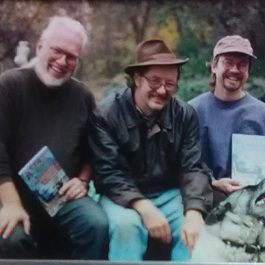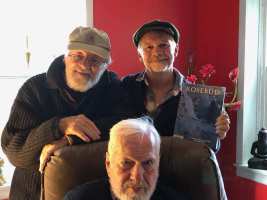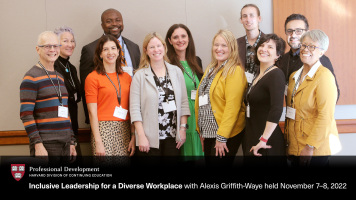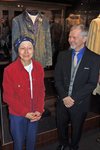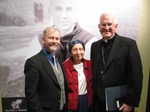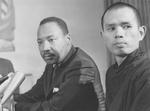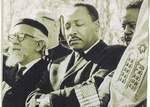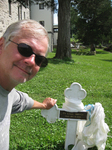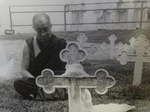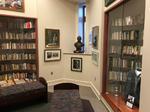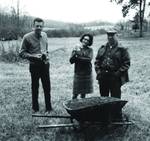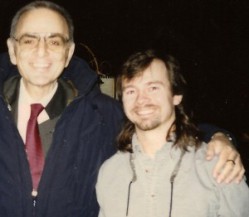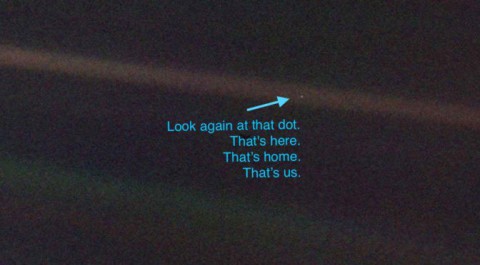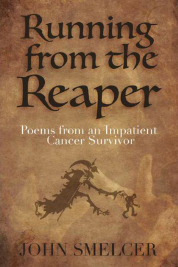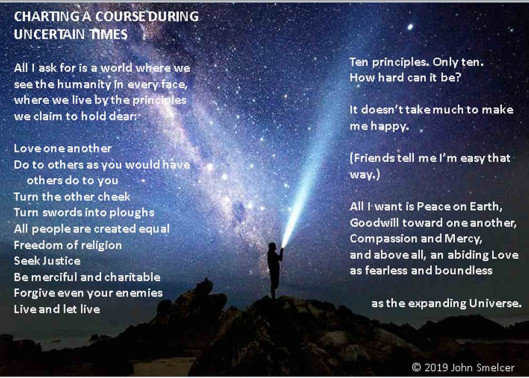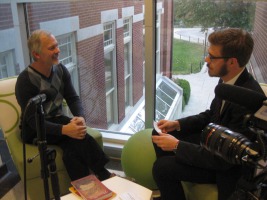"What impresses me most about John Smelcer, aside from his powerful writing, is his indomitable spirit. He has never given up; he has never let others quiet his voice. He continues to write and the world continues to listen to what he has to say." -James Welch, American Book Award winning author of Fools Crow & The Indian Lawyer
"Smelcer's prose is lyrical, straightforward, and brilliant...authentic Native Alaskan storytelling at its best." -School Library Journal
"John Smelcer's poems bring one a strong sense of his Indian ancestry, his constant and haunting awareness of the indigenous life so grievously wounded yet still alive around and in him. As a pioneer in exploring the almost defunct Ahtna Athabaskan language for some of his own work, which he then translates into English, Smelcer is taking an active step towards rescuing it for his contemporaries. When he evokes the Alaskan landscape, its fauna, its myths, one can't help but feel one is hearing the voice of a late twentieth century individual poetic sensibility and the collective voice of the people of that landscape in times past. This gives his work an unusual and valuable resonance." -Denise Levertov, foreword to Songs from an Outcast
"The North, the winter, warmth within cold--this poet speaks from the land, and for the land and the people who belong to it." -Ursula K. LeGuin, backcover, Songs from an Outcast
"In a world where the media relentlessly enflames fear and hatred, here is a quiet voice espousing the triumph of love and peace." -Desmond Tutu, winner of the Nobel Peace Prize
"John Smelcer is Alaska Native . . . just one voice among millions of Native Americans. His is a well-honed voice, however. There's much to be gained from listening to him." -Anchorage Daily News
"John Smelcer is one of the truly great poets I have come across in my life. His poetry is of genius." -Ruth Stone, winner of the National Book Award
"It impresses me that John Smelcer is a very considerable American poet, an astute observer of our contemporary scene." X.J. Kennedy, editor of LITERATURE
"Allen Ginsberg named John Smelcer one of the most brilliant younger poets in America. Poetry as it should be, without a wasted word, with unparalled attention to sound and rhythm." W.P. Kinsella, author of Field of Dreams
Author, poet, professor, mythologist, linguist, cancer survivor, fitness advocate, philosopher, and public intellectual, John Smelcer was mentored by the legendary John Gardner (The Art of Fiction, On Becoming a Writer, On Moral Fiction), James Michener (Centennial, Texas, Alaska), W. P. Kinsella (Field of Dreams), and Joseph Campbell (The Power of Myth, The Hero With a Thousand Faces). John Smelcer is the award-winning author of more than sixty books, many translated into other languages. Few living American authors have written as many books. Aside from his many novels and poetry collections--including his most recent poetry books, Raven and Running from the Reaper--John Smelcer has published books in Native Studies, history, folklore and mythology, anthropology and archaeology, linguistics, as well as anthologies, plays, screenplays, dictionaries, religion/spirituality, including an inspirational pocketbook A New Day.
John Smelcer co-wrote several children's books with Ann McGovern, author of Stone Soup and one of America's most beloved children's authors since the 1960s. Click on "dictionaries" on the menu above to read/download John's bilingual children's picture book, Walk About: Life in an Ahtna Athabaskan Village (1998). His historical novels like Stealing Indians--about Indian Boarding Schools in the USA and Canada--honestly portray the Native American Experience in the United States. Stealing Indians is routinely taught in Native schools. Every year, Dr. Smelcer talks to classes about his books. John Smelcer's poems, short stories, essays, interviews, articles, and blogs--read by millions--appear in hundreds of magazines and journals worldwide. He has judged dozens of national and international literary awards, as far away as Israel and Australia.
Dr. Smelcer's education includes graduate studies in literature at Cambridge and Oxford. For over a decade, Dr. Smelcer studied world religions at Harvard University. In November of 2022, he earned a certificate in Diversity and Leadership from Harvard University (see photo below; Dr. Smelcer at far left). He also earned a Certificate of Advanced Graduate Study (CAGS) in Health Care Administration from Texas A&M University. Dr. Smelcer was manager of the department of Health Education at Southcentral Foundation, part of the Alaska Native Medical Center campus in Anchorage, Alaska. The campus, which serves over 80,000 Alaska Natives, is one of the world's premiere institutions for indigenous healthcare.
In the fall of 2017, Dr. Smelcer retired as poetry editor at Rosebud magazine, a post he held for nearly a quarter of a century. The Boston Globe once called Rosebud "the best literary quarterly in America." As poetry editor over three decades, John estimates he received and read some 250,000 poems. Over the years, John wore other hats at Rosebud, including serving as Publisher/CEO during the early 2000s. During which time, John led Rosebud through a period of reorganization that allowed the magazine's circulation to increase to over 10,000 copies distributed in the US, Canada, and the UK. Nowadays, as Rosebud's Senior Editor Emeritus, John Smelcer advises the magazine and continues to bring amazing literature to Rosebud readers. For instance, he recently tried to secure the rights to publish two previously unknown and unpublished short stories by John Steinbeck, and he successfully secured the rights to publish several poems by Ernest Hemingway. (I bet you didn't know Hemingway wrote poetry.)
(Above photo: Rosebud magazine's longtime editors, left to right: John Lehman,
Rod Clark, and John Smelcer 1996. Below photo: 2020) Sadly, John Lehman passed away in June of 2021.
FINDING THOMAS MERTON
In the spring of 2015, John Smelcer “discovered” the worldly possessions of Thomas Merton, one of the most influential figures of the Twentieth Century. Writer, theologian, philosopher, poet, mystic, and social rights and peace activist, Merton was arguably the most famous monk in the world when he died on December 10, 1968. It has been said that Merton was the conscience of America, especially during the tumultuous 1960s. He was the author of seventy books, including his iconic The Seven Storey Mountain, widely considered one of the most inspiring coming-to-faith autobiographies in history, alongside St. Augustine’s Confessions, and listed as one of the best nonfiction books of the century. Two years later, Dr. Smelcer "discovered" a letter from the chair of the Pulitzer Prize Selection Committee to Columbia University naming Merton's poetry book, The Tears of the Blind Lions, as a finalist for the Pulitzer Prize in 1950 (Gwendolyn Brooks received the prize). For almost seventy years, no one had known of the honor, not Merton nor his publisher. Merton influenced the Civil Rights Movement, helping to inform Martin Luther King, Jr. on the nature of nonviolent protest. Both Merton and King have been hailed as "America's Prophets." With fellow priests, Daniel and Phillip Berrigan, and refugee Vietnamese Buddhist monk Thich Nhat Hanh, Merton was one of the most vocal critics of the war in Vietnam. It was Merton who convinced Martin Luther King, Jr. to protest the Vietnam War. In Why We Can't Wait (1964), Dr. King praised President Johnson for his practicality and genuine commitment to civil rights issues, but King lost Johnson's support after he joined Merton in protesting the war in April of 1967. Johnson had vowed never to lose the war in Vietnam. It is reported that had he lived, Dr. King was going to call for mass civil disobedience, encouraging the burning of draft notices. In 1971, Dr. King postumously won a Grammy for Best Spoken Word Album for "Why I Oppose the War in Vietnam" (King was nominated for three Grammys, including for his "I Have a Dream" speech). While it is well known that after receiving the Nobel Peace Prize in 1964, Martin Luther King, Jr. nominated Thich Nhat Hanh for the prize in 1967. What is not commonly known is that Thomas Merton also recommended Thich Nhat Hanh for the prize.
Merton corresponded with Rabbi Abraham Joshua Heschel (1907-1972), who was a friend of Dr. King and who frequently marched with him (see photo below). Aside from civil rights issues and the war in Vietnam, Merton and Heschel discussed the Second Vatican Council's (Vatican II) statement on nonviolence and peace, as well as about improving interfaith relations. Merton even corresponded with Ethel Kennedy, Robert Kennedy's wife, ostensibly to better understand Bobby's and President Kennedy's views about nuclear armament, the Cold War, civil rights, and the war in Vietnam. Merton sent his condolences to Ethel Kennedy after the assassinations of both John and Bobby, and Ethel sent a letter of condolence to the monstery after Merton's death. Coretta Scott King similarly sent a letter to the monastery. In his "Cold War Letters," Merton prophesied the assassination of President Kennedy for his peace-making policies in opposition to the advice of his war-mongering military and CIA advisors who pressured him to launch a preemptive nuclear attack against the Soviet Union. President Kennedy formed the Peace Corps in March 1961, around the same time as the CIA's failed invasion of Cuba, which came to be known as the Bay of Pigs, and sixteen months before the Cuban Missile Crisis. Merton's last book, Faith and Violence (1968), published months before his death, was extremely critical of America’s war in Southeast Asia, especially of the Johnson Administration. In November 1968, weeks before his mysterious death, Merton met with a then-young Dalai Lama in Dharmsala, India where the Dalai Lama lived in exile (see photo below). Merton increasingly wrote about environmentalism. In fact, he wrote to Rachel Carson in 1962 in support of her pioneering book, Silent Spring, at a time when others were criticizing it. Merton was close friends with John Howard Griffin, who wrote about racial inequality early on during the Civil Rights Movement and is best known for his controversial sociological project to pass as a Black man in the Deep South in 1959 and for his subsequent book about his experiences, Black Like Me (1961). After Merton's death, Griffin became Merton's biographer. Throughout the 1960s, American poets like Wendell Berry, Joan Baez, and Denise Levertov visited Merton at the monastery (see photo below). Decades later, Levertov wrote a foreword (see at top of page) to John Smelcer's poetry book, Songs from an Outcast (UCLA, 2000).
On August 9, 1943, Austrian farmer and converted Catholic conscientious objector Franz Jägerstätter was executed by the Nazis for adhering to his Christian belief that he should not kill others for Hitler and his unjust and immoral war. From prison, he wrote whether it is right and just to kill others because your government declares it is right and just to do so in contradiction to higher laws. The story of Jägerstätter's moral courage would have been forgotten if it weren't for the efforts of American sociologist, Gordon Zahn, who published a book about him (In Solitary Witness, 1966) and his friend, Thomas Merton, who included a chapter about Franz Jägerstätter in Faith and Violence. Together, Zahn and Merton emboldened Pope Benedict XVI to declare Jägerstätter a martyr and beatified him in 2007—a step toward sainthood. President Kennedy once remarked of individuals like Franz Jägerstätter: "War will exist until the distant day when the conscientious objector enjoys the same reputation and prestige that the warrior does today." For the past few years, John Smelcer has been writing a novel inspired by Franz Jägerstätter. Jägerstätter's only surviving daughter collaborated with him on the project.
John Smelcer’s discovery was a treasure trove of Mertonalia. While numerous archives such as at Columbia University hold letters, notes, book drafts, etc., few of Merton’s personal belongings were known previously to exist. Merton was, after all, a Trappist monk, and therefore poor of earthly possessions by choice. The trove included all the clothing Merton was wearing in photographs from the last years of his life: photos of him in his white monk’s cowl and black hooded scapular (worn in the photo with the Dalai Lama below); photos of him in his iconic denim jackets, shirts, jeans, and sailor cap (see photo below at Frazier Museum). The collection included such sacred objects as his rosary, his flagellant whip, and his personal Trappist Psalter. It also included notes, photos, letters, and audiotapes of him talking. A draft of a poem Merton was working on just a couple of days before he died was found neatly folded and tucked inside a pocket of an article of clothing that was returned along with his body. It is ostensibly his last writing. The objects had been protected by close friends of Merton’s—a fellow brother monk and a nun from a nearby convent. Upon learning of Merton’s death, the Abbot of Gethsemani ordered the fellow monk to collect Merton’s possessions and to get rid of them (he was worried about zealous devotees descending on the monastery in search of Merton relics as souvenirs). Shortly thereafter, and on Merton’s advice, the monk and the nun left their respective religious orders and married a year later. They moved to Louisville, Kentucky for years, and eventually to the Midwest. For almost half a century, the two safeguarded their friend’s belongings. The former monk had been a prisoner in German POW camps during WWII after his B-17 was shot down on his 25th and final mission. He was among hundreds of POWs tortured by the Gestapo during the infamous "Heydekrug Run" to Stalag Luft IV. The monk died in 2009. In her mid-eighties, the former nun worried about what would happen to the collection if she passed away. For years, she had been praying to Thomas Merton to send someone to help her.
And then John Smelcer came along.
One day, an acquaintance casually mentioned to John that he knew of a nun who twenty-five years earlier had told him that she had all this stuff that used to belong to Thomas Merton. Coincidentally, at the time, John was writing The Gospel of Simon, the first-person account of Simon of Cyrene, the man who the Bible says was compelled by Roman soldiers to help Jesus carry his cross. The interfaith story of Jesus's gospel of love, compassion, and mercy--at once faithful yet at times daring and thoroughly modern--was inspired in part by Thomas Merton, known to fellow monks and friends as Father Louie. Written over twenty years, the book is dedicated to Thomas Merton, Martin Luther King, Jr., and Pope Francis, who was inspired by Merton as a young priest. Recognizing the significance that if what the friend said was true and if the nun still had the collection, it wasn't long before John was standing at the nun's doorstep--the beginning of a wonderful and enduring friendship. Despite that the nun was fighting cancer and in spite of the urging by some Catholic clergy to destroy the collection, the two worked together over the next few years to donate every object to museums, including the Thomas Merton Center at Bellarmine University, The Vatican, and the Smithsonian's Museum of American History. During those years, Dr. Smelcer interviewed her dozens of times in her home and at his to collect her remarkable stories. Sadly, in her 90s, the nun passed away in mid-January, 2022 just as the advance review copies of the book were published. Click here to watch a brief video of Helen Marie talking about her mentor and friend, Thomas Merton.
In his later writings, especially during the tumultuous 1960s, Merton insisted that prayer and the religious life had to be equal to taking action to alleviate suffering, injustice, and inequality. After studying earlier religious writers like Meister Eckhart, Dietrich Bonhoeffer (the German pastor executed in 1945 for his failed attempt to overthrow the Nazi regime in July of 1944), and his friend Jacques Maritain who visited Merton at his hermitage in 1966, Merton increasingly came to understand that compassion means justice and justice requires action, not just empty prayer. The author of Ghandi on Non-Violence (1965), Merton helped inform Martin Luther King, Jr.’s practice of non-violent protest that was the hallmark of the Civil Rights Movement. Indeed, the two had planned a weeklong spiritual retreat at Merton’s hermitage near Bardstown, Kentucky, but King was assassinated weeks before the scheduled event. Thomas Merton and Coretta Scott King corresponded about the tragedy. When a young John Lewis crossed the Edmund Pettus Bridge on March 7, 1965 on what later became known as "Bloody Sunday," he carried a backpack containing an orange, an apple, a toothbrush, and Thomas Merton's autobiography, The Seven Storey Mountain (see photo below). In 1987, John Lewis was elected to the U.S. Congress, where he served until his death in July of 2020. During his decades of service to his country, John Lewis was hailed as the "Conscience of Congress." Thomas Merton died under mysterious circumstance while attending a conference on monasticism outside Bangkok, Thailand eight months after Martin Luther King, Jr.'s assassination. and twenty-seven years to the day after he entered the monastery as a postulant. All three men exemplified the Christian obligation to seek peace, relieve suffering, and correct injustice.
Contrary to some specious thinking, Merton was not an outcast among Catholics. Indeed, Pope John XXIII and Pope Paul VI both considered Merton to be the greatest living Christian writer and both sent him gifts to demonstrate their affection. Pope John XXIII was inspired by Merton in writing his November 1963 encyclical Peace on Earth (Pacem in Terris), in which he wrote that the Christian must be a peacemaker. Pope John Paul II often quoted Merton in his homilies, and Pope Francis said that Merton inspired him as a young priest. In his address to the U. S. Congress on September 24, 2015, Pope Francis praised Thomas Merton and Martin Luther King Jr. as being among the greatest Americans, alongside Dorothy Day and Abraham Lincoln. Pope Francis said, "Merton was above all a man of prayer, a thinker who challenged the certitudes of his time and opened new horizons for souls and for the Church. He was also a man of dialogue, a promoter of peace between peoples and religions.” The Dalai Lama was once asked to name the three people who most influenced him. Along with his personal Dharma teacher, he named Thomas Merton. It was with a glad heart that John Smelcer wrote to the Dalai Lama and Thich Nhat Hanh to share news of his discovery of Merton's worldly possessions. Both thanked him for the glad tidings.
From everything he learned since his "discovery" in 2015, Dr. Smelcer urged Pope Francis to declare Thomas Merton a martyr. Although he feels he is unworthy and undeserving of his role in preserving Thomas Merton's legacy, Dr. Smelcer's book about the experience and the unexpected spiritual journey, Enacting Love, was published in the summer of 2022 (click on "books" to order on amazon.) Several of Merton's old friends helped him along the way. If you care about love, compassion, mercy, peace, non-violence, Civil Rights, tolerance, inequality read this book.
In the early-to-mid 1990s, Dr. Smelcer was co-chair of Alaska Native Studies and assistant professor of English and Education at the University of Alaska Anchorage. He served as an outside reader on a PhD dissertation committee on the history of American Indian education at Harvard University, as well on numerous committees to increase diversity in the faculty. He was faculty advisor for the Alaska Native Student's Association. In the mid-to-late 1990s, Dr. Smelcer was executive director of the Ahtna Heritage Foundation, whose mission is to preserve the Ahtna language and culture and to administer the tribe's college scholarship program. He was also a tribal archaeologist. For many years, Ahtna elders from every village taught John everything they knew about the language, mythology, and customs until John became the living repository of the cumulative knoweldge of Ahtna. Nowadays, Dr. Smelcer is among the last speakers of Ahtna, one of the most severely endangered languages on earth. In 1998, his tribe published a dictionary of the language he had edited (click on "dictionaries"). That same year, Dr. Smelcer was nominated for the Alaska Governor's Award for his contributions to the preservation of Alaska Native languages and cultures. At a ceremony in 1999, Ahtna Chief Harry Johns designated John Smelcer a Traditional Ahtna Culturer Bearer. John teaches Ahtna in an innovative YouTube series called "Ahtna 101" (see below). As the only tribal member who is able to read and write in Ahtna, John sometimes writes poems in Ahtna. The poems he writes and publishes stand as the only literature written in the Ahtna language in existence. His The Complete Ahtna Poems, includes forewords by Noam Chomsky and Steven Pinker.
Throughout most of the 1980s and early 1990s, John used to drive down to Kenai to dipnet salmon and to visit fellow Alaska Native ethnographer and elder, Peter Kalifornsky, who won the American Book Award for his book of Dena'ina ethnographic narratives, Dena'ina Sukdu. Peter and John often talked about their endangered Native languages and about the projects they were both working on. Peter died in 1993 at the age of 82. During the same years, John used to visit Chief Peter John whenever he went pike fishing or duck hunting in Minto Flats near the Village of Minto. They would discuss their efforts to preserve their languages. Chief John, who died in 2003, used to lament: "I give the young people lots of chance to learn what I know so it won't be lost forever. But none of them take me up on the offer. Nobody wants to learn about the old ways, like our language. That's why I stop trying to pass it on to the young people. Everything I know is going to die with me." One of John Smelcer's greatest fears is that everything he knows will die with him.
For years, Dr. Smelcer delivered an annual lecture in linguistics at Binghamton University about Alaska Native languages and especially about Ahtna. The lecture hall was always packed with students and faculty. Despite all these facts, some non-Natives--including highly educated university professors and established ethnic writers--ridicule John for speaking, writing, and teaching his severely endangered Native language. One famous African American writer named Marlon James openly mocked John saying that his Native language "sounded like gibberish to him," akin to the way colonizers degraded other languages as being inferior or primitive--including African languages--by calling them gobbledygook. How is that African American writer's work representative of the experience of the "Other" in American literature when he ridicules and degrades a writer of a different American ethnicity who is faithfully and tirelessly trying to produce literature in the severely endangered language of a people who lived on the continent for thousands of years before his African ancestors ever arrived in the dark holds of ships?
Dr. Smelcer also speaks Alutiiq, a neighboring, yet unrelated Alaska Native language, and published a dictionary of it as well. For almost five years, Dr. Smelcer was director of that tribe's Culture and Language Preservation Project. One of the projects completed during those years was The Day That Cries Forever, a book in which every living survivor of the biggest tsunami in history gives their account of what happened that fateful day in March of 1964 when their seaside village was swept off the face of the earth. Former governor of Alaska, Jay Hammond, said of the book: "the history of Alaska was incomplete until this book." Dr. Smelcer also edited and published We are the Land, We are the Sea, an anthology of stories by the people of Chenega on their subsistence relationship to the land and sea, a subsistence lifestyle that was severely impacted by the Exxon Valdez oil spill in Prince William Sound in 1989. As a college student back then, John worked on a crew to clean the beaches and wildlife of oil.
John Smelcer has published dozens of books on Alaska Native history, oral history, languages, and mythology. In 2009, John Smelcer delivered the Convocation Address at Baruch College in New York City after Sherman Alexie, who was originally invited to deliver the address, was unable to attend. In 2012, Dr. Smelcer delivered the keynote address at the FBI's New York City field office during National Native American Heritage Month (November) as part of President Obama's initiative to increase diversity awareness among government agencies. In 2013, friends across the nation recommended John Smelcer to the White House to receive the Presidential Citizen's Medal for his enduring efforts to preserve America's Native heritage.
John Smelcer had conversations about science and religion with his friend, Pulitzer, Emmy, and Peabody Award winning scientist, Carl Sagan (photo: Carl Sagan and John Smelcer in Anchorage, Alaska, 1996). More than anyone, it was Sagan who convinced NASA to turn around the camera on Voyager when it was four billion miles from home and take a picture of Earth. The iconic image of our planet as a pale blue dot no larger than a single pixel in a shaft of sunlight shows just how small, fragile and unique our planet really is. Following his late friend's example, John often writes about having compassion for our planet.
“Look again at that dot. That’s here. That’s home. That’s us. On it everyone you love, everyone you know, everyone you ever heard of, every human being who ever was, lived out their lives. The aggregate of our joy and suffering, thousands of confident religions, ideologies, and economic doctrines, every hunter and forager, every hero and coward, every creator and destroyer of civilization, every king and peasant, every young couple in love, every mother and father, hopeful child, inventor and explorer, every teacher of morals, every corrupt politician, every superstar, every supreme leader, every saint and sinner in the history of our species lived there—on a mote of dust suspended in a sunbeam.” -Carl Sagan, Pale Blue Dot
After publishing The Gospel of Simon in 2016, John Smelcer was invited to write a blog for The Charter for Compassion, the world's largest and most comprehensive compassionate movement with some 8.5 million "members" in 45 countries. The Charter promotes compassion, tolerance, nonviolence, peace, interfaith discourse, social justice, and environmental stewardship. Founded by Karen Armstrong (A History of God) after she received the $100,000 TED Award in 2008, the award winning website garners some 40-55 million visits a year. (Click on the icon below to go to John Smelcer’s blog page.) From 2016-2020 Dr. Smelcer was the inaugural Writer-in-Residence for the Charter for Compassion, where every April during National Poetry Month, he teaches a popular global online course entitled Poetry for Inspiration and Well-Being, which sometimes enrolls hundreds of students from around the world. In celebration of the tenth anniversary of the Charter, John wrote a special poem (below), which was shared by the Charter with millions of people around the world.
If I have learned anything from my nearly seven decades of living on earth and from my tenacious, persistent, and judicious studies of society, linguistics, humanities, history, and philosophy and religion over nearly half a century at some of the world's greatest universities, and from personal friendships with some of the world's greatest religious and spiritual intellectuals, it is this: People ask me all the time what is the secret to knowing God and to living a mindful and compassionate life that is more Jesus-like, of making a Heaven on Earth. My answer is simple but so allusive to most people: "If you want to know God, love everything and everyone all the time and all at once."
John Smelcer believes in service to his community. He recently served on the board of directors for a nonprofit that provides transitional housing and support for recovering addicts in NE Missouri. For the most part, he acts as a handiman, repairing and maintaining the residential house. Before that he recently served as vice president of the board of directors of a pay-what-you-can nonprofit cafe that is part of One World Everybody Eats (OWEE), a national movement of over 60 cafes in towns and cities across America that work to alleviate hunger and promote health and food education, local and organic foods (Farm to Table), and sustainability. The James Beard Awards named OWEE its Humanitarian of the Year in 2017. Sadly, like thousands of other restaurants, the cafe closed during the pandemic. In the years before that, Dr. Smelcer served on the board of directors for the regional United Way. John was a candidate to be an official National Elector Delegate for the State of Missouri in the 2020 U.S. Presidential Election.
In the fall of 2022, Dr. Smelcer was diagnosed with high grade stage 2 B-cell non-specific, non-Hodgkins Lymphoma, a rare blood cancer in which B cells mutate and proliferate to the point they build up tumors. In John's case, the tumor grew in his left armpit, impinging his ulnar nerve. The fast-growing cancer can spread throughout the body. Doctors said John would be dead in three months if he didn't start treament immediately. Wisely, John completed his chemo and immunotherapy protocol. (Photo below of John Smelcer ringing the bell after completing his cancer treatment at Ellis Fischel Cancer Center, MU Health, Columbia, MO, February 6, 2023) A follow-up PET scan in late March revealed that the cancer had not returned. After more than half a year of writing about his cancer experience, John's poems were published in Running from the Reaper: Poems from an Impatient Cancer Survivor (April 2023, click on bookcover below to go to Amazon). Poems from the collection have appeared in cancer magazines across the nation, including in Conquer (April 2023). Today, Dr. Smelcer is a contributing writer at Cure magazine (also called Cure Today), America's highest circulated magazine expressly about cancer for cancer patients, survivors, family, and caregivers. While roughly a million people read each issue of the magazine, the official website receives another twelve million views a year.
Click on the Charter for Compassion logo (above) to learn more about Dr. Smelcer's popular online course in poetry.
Click on "bio" to learn more about John Smelcer's remarkable life.
Click on "ethnicity" to learn about John Smelcer's Alaska Native heritage.
Click on "dictionaries" to download Dr. Smelcer's Ahtna and Alutiiq noun dictionaries, as well as educational posters of both languages, and a bilingual children's picture book in Ahtna and English.
Back around 2016, an NPR radio host interviewing Dr. Smelcer about the loss of indigneous languages globally (see photo below), asked if he used technology like YouTube to archive and post his linguistic preservation work, thereby making it more accessible. Since then, Dr. Smelcer has been teaching his severely endangered Alaska Native language on a YouTube channel called "Ahtna 101." To date, there are over 110 episodes. Click on the first icon below to watch episodes.
Beginning in the fall of 2023, Dr. Smelcer created a new YouTube channel in which he retells traditional myths from his tribe. Click on the bottom YouTube icon below to watch episodes of "Ahtna Myths."
sitemap verification more Info
Copyright 2009-2017 - John Smelcer Official Web Site

